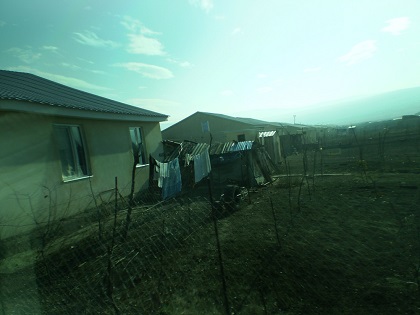10,000 Georgian IDPs enjoy better living conditions

More than 10,000 Georgian people displaced by conflict and violence and forced to live in collective centres are benefiting from improved living conditions.
Millions of dollars has been allocated by the Government and offshore aid agencies to improve the lives and living conditions of IDPs (internally displaced persons), who are some of the country’s most vulnerable.
The Government, with financial support of United States Agency for International Development (USAID) allocated 22,976 000 GEL ($12,092,631 USD) to improve living conditions for more than 10,000 refugees across the so-called occupation line in Georgia’s breakaway Tskhinvali (South Ossetia) region.
Some of this money was spent on a new water reservoir, which was officially opened today in Plavismani village by Georgia’s Minister of Internally Displaced Persons from Occupied Territories, Accommodation and Refugees Sozar Subari, USAID mission director Stephen Haykin, US Ambassador to Georgia Richard Norland and deputy executive director of Municipal Development Fund (MDF) Ilia Darchiashvili
The rehabilitation of Plavismani’s potable water supply system was part of a larger New Economic Opportunity (NEO) project, funded by USAID which is helping thousands of households along the so-called border with Georgia’s occupied territory.

A refugee settlement in Shavshebi village, Shida Kartli district of Georgia.
About 8,800 families in Gori municipality who live near the occupation line will be connected with a reliable gas supply by the end of the year, officials said today. The so-called border has been contested since the Russia-Georgia war in August 2008.
Meanwhile, more than 33 villages in Georgia’s eastern Shida Kartli region will be connected with gas for free after the central government allocated 19 million GEL to this project.
In addition, five refugee cottage settlements had their drainage systems cleaned and appropriate drainage channels established. In nine refugee settlements rehabilitation of the water supply system was carried out and for another five settlements repair work was carried out on the main trunk and domestic pipeline networks.
Furthermore, the bathrooms of more than 1,100 cottages within the refugee settlements were repaired.
Work already completed as part of the project has helped solve major water supply problems for refugees living at the collective centres.
 Tweet
Tweet  Share
Share